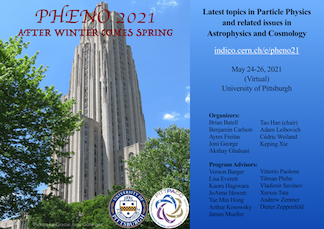Speaker
Description
Recently there has been increasing interest in alternate methods to compute quantum tunneling in field theory. Of particular interest is a stochastic approach which involves (i) sampling from the free theory Gaussian approximation to the Wigner distribution in order to obtain stochastic initial conditions for the field and momentum conjugate, then (ii) evolving under the classical field equations of motion, which leads to random bubble formation. Previous work showed parametric agreement between the logarithm of the tunneling rate in this stochastic approach and the usual instanton approximation. However, recent work claimed excellent agreement between these methods. Here we show that this approach does not in fact match precisely; the stochastic method tends to overpredict the instanton tunneling rate. To quantify this, we parameterize the standard deviations in the initial stochastic fluctuations by $\epsilon*\sigma$, where $\sigma$ is the actual standard deviation of the Gaussian distribution and $\epsilon$ is a fudge factor; $\epsilon$ = 1 is the physical value. We numerically implement the stochastic approach to obtain the bubble formation rate for a range of potentials in 1+1-dimensions, finding that $\epsilon$ always needs to be somewhat smaller than unity to suppress the otherwise much larger stochastic rates towards the instanton rates; for example, in the potential of Braden, et. al. one needs $\epsilon$ ~ 1/2. We find that a mismatch in predictions also occurs when sampling from other Wigner distributions, and in single particle quantum mechanics even when the initial quantum system is prepared in an exact Gaussian state. If the goal is to obtain agreement between the two methods, our results show that the stochastic approach would be useful if a prescription to specify optimal fudge factors for fluctuations can be developed.
